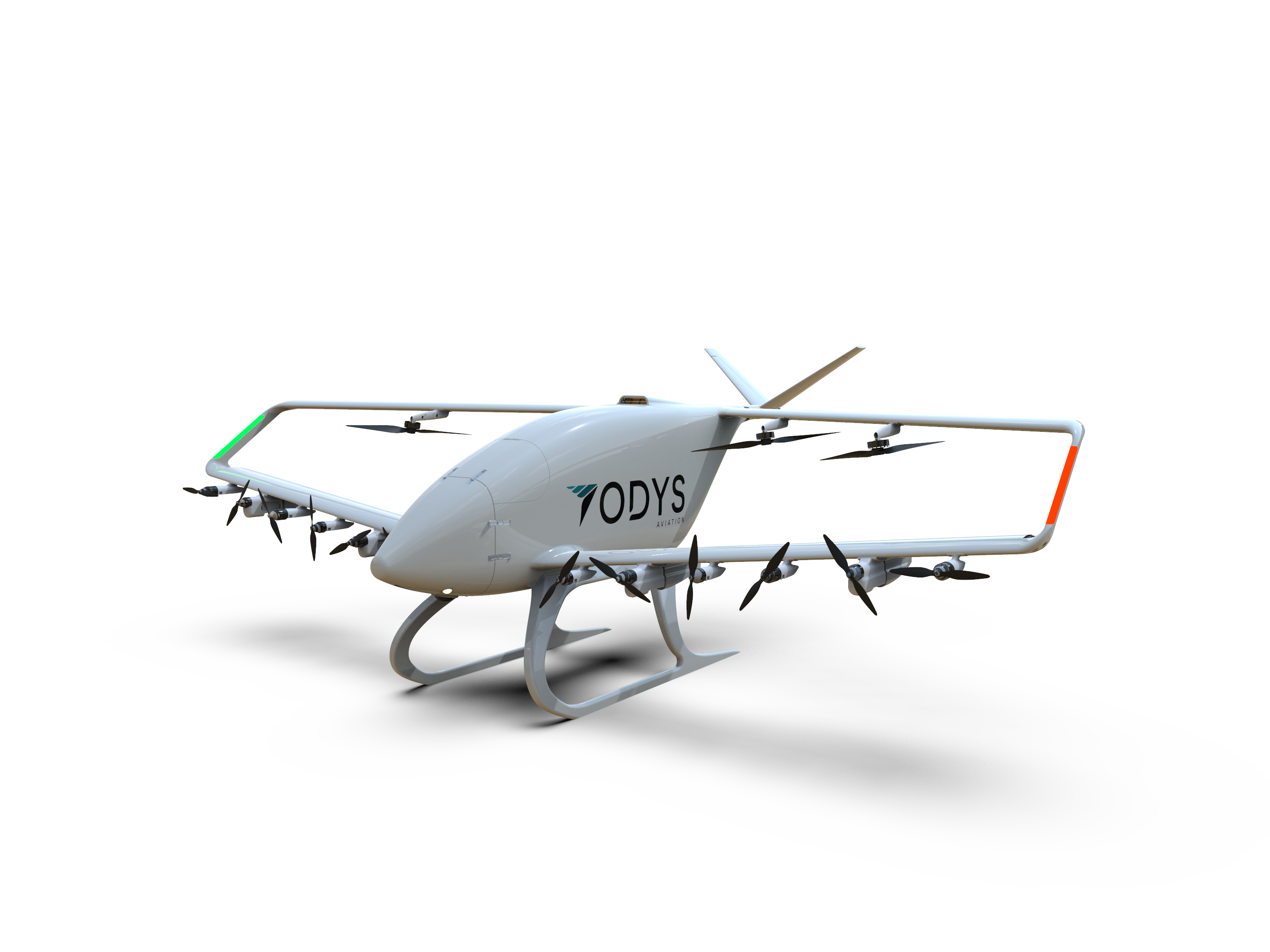Click Here to View This Page on Production Frontend
Click Here to Export Node Content
Click Here to View Printer-Friendly Version (Raw Backend)
Note: front-end display has links to styled print versions.
Content Node ID: 420243
Odys Aviation is working to bring an uncrewed air vehicle (UAV) called Laila to market over the next 24 months, targeting a variety of logistics roles. The newly disclosed project is being advanced at the same time that the California start-up is developing its nine-passenger hybrid-electric VTOL aircraft, which features flap-based thrust vectoring to generate lift and a blown wing.
To boost capital reserves raised through its $12.4 million seed round, Odys is preparing for a Series A funding round. Some financial support for the planned 130-pound-payload UAV has come from eight U.S. Department of Defense contracts that will result in the delivery of 10 pre-series-production aircraft for test and evaluation in 2025. It has already flown a full-scale prototype of this model, for which it aims to start series production in 2026.
Laila is expected to have what the military defines as a Group 3 expeditionary footprint, meaning it can be shipped anywhere in the world and be ready to fly in less than 20 minutes. Its projected range is 450 miles, with a cruise speed of 125 mph and a service ceiling of 18,000 feet. In addition to the Pentagon, Odys has been in touch with prospective customers involved in logistics, e-commerce deliveries, and offshore and humanitarian support roles.
Laila will have a scaled-down hybrid propulsion system and use the distinctive flap-based thrust vectoring system, similar to the nine-passenger aircraft. “This is a great first product to derisk our technology, regulatory compliance pathways, and production processes,” co-founder and CEO James Dorris explained.
According to Jonathan Stephens, Odys’s head of certification and airworthiness, while Laila will not necessarily require a type certificate to enter service, the company intends to pursue that level of approval. One path to market could start in Europe by seeking design approval from EASA, which would lead to a design verification report. The company believes the work required to obtain the design verification report could be transferable via an FAA 44807 exemption certificate, or a type certificate, that would enable U.S. operations.
Green, Lean Regional Airliner Is in the Wings
In tandem, at Odys’s headquarters in Long Beach, California, engineers will spend the next 24 months completing the conceptual design and begin the assembly of a prototype for what the company views as a new type of regional airliner. Operating purely on electric power, the aircraft is expected to have a range of 200 miles, increasing to 750 miles with power from the as-yet-unspecified turbine engine. The Odys aircraft will operate at altitudes of up to 30,000 feet and at speeds of up to 345 mph.
According to Dorris, battery-electric propulsion technology is too constrained in terms of payload and range for “meaningful high-impact missions,” and he expects this to remain the case for at least 10 to 20 years. Odys has also eschewed the reliance that most eVTOL aircraft developers have on tilting fans and rotors to generate lift, in favor of its own flap-based thrust vectoring as the primary mechanism for generating lift. The flaps direct thrust from the rotors downward, and these have been combined with a blown or box wing architecture to support stability and extended range.
The passenger aircraft’s turbine engine will be able to operate on 100 percent sustainable aviation fuel. However, Odys is predicting reductions in carbon emissions of between 70 and 90 percent even if jet-A is used, depending on the route flown.
“With our hybrid-electric aircraft, the reserve mission can be operated on fuel, so we can use all the battery power and don’t have to save 30 to 40 percent for the reserve,” Dorris told AIN, explaining how the design will meet standard safety requirements to have sufficient power to cover for any flight diversion.
According to Odys, the aircraft will be especially efficient and have a low environmental footprint on high-frequency routes such as Los Angeles to Las Vegas, as well as on slightly longer sectors such as Los Angeles to San Francisco. It targets operators wanting to feed traffic into major hub airports with passengers connecting to high-value long-haul services, and therefore needing to be able to check luggage onto the aircraft.
The company says the aircraft will be able to serve 52 percent of U.S. domestic routes, with prospective operators also expected to start serving more convenient municipal airports, such as Santa Monica. “On many current regional routes, many travelers are not flying because they find it preferable to drive, and so the airline industry is missing out on a significant part of the customer base,” Dorris told AIN. In his view, growing numbers of travelers are demanding a way to fly with a lower environmental impact, and government policy is increasingly providing a further inducement for airlines to decarbonize their fleets.
According to Odys, it now holds letters of intent covering provisional sales agreements with 13 undisclosed airlines and operators across four continents for more than 1,200 aircraft. It values this business at more than $10 billion, which implies a base price per aircraft of around $8.3 million.
The projected timeline for Odys’s passenger airliner to enter service has slipped by around a year from mid-2027 into 2028. The company has signed memorandums of understanding with several key suppliers, who for now are undisclosed.
